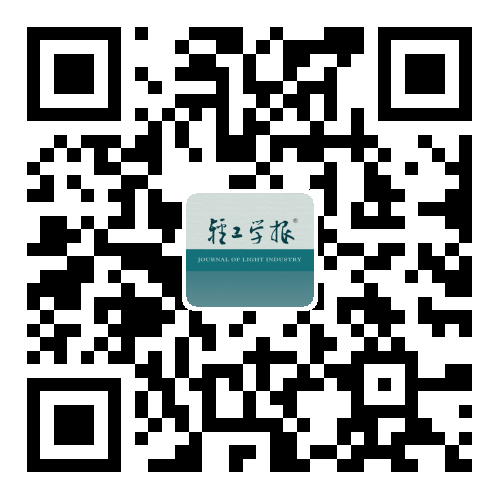《化妆品监督管理条例》背景下《化妆品安全评估技术导则》的解读刍议
Interpretation and appraisal of the Technical Guidelines for Cosmetic Safety Assessment under the Cosmetics Supervision and Administration Regulations
-
摘要: 科学可行的化妆品安全评估体系是保障消费者用妆安全和推动中国特色化妆品产业健康、可持续发展的重要基础.为了配合2020年6月国务院颁布的《化妆品监督管理条例》的顺利实施,国家药品监督管理局陆续颁布了与化妆品质量安全相关的系列二级法规与技术规范.以2021年4月颁布的《化妆品安全评估技术导则》(简称《技术导则》)为切入点,主要从强化评估人员的责任、补充风险评估程序、优化评估方法、增加对儿童化妆品的安全评估等方面梳理了《技术导则》对我国化妆品安全评估带来的变革和影响,从化妆品原料、致癌物和皮肤致敏物三个类别介绍了我国化妆品安全评估的基本原则及与欧盟的异同,分析了新法规对政府、企业、消费者等不同受众的影响,并提出了培养风险评估人员及其风险管理能力、建立企业风险监测数据库、积极学习新方法、借鉴欧盟安全性评估先进经验等的应对建议,以期为我国化妆品行业科学、有序地开展安全评估工作提供有益的参考与指导.Abstract: A scientific and feasible cosmetic safety assessment system is the basis for ensuring the healthy and safety of consumers, standardizing the industrial order and promoting the sustainable development of Chinese cosmetic industry. In order to cooperate with the implementation of the Cosmetics Supervision and Administration Regulations issued on June of 2021, the state has successively promulgated a series of secondary regulations and technical specifications related to cosmetic safety. Taking the Technical Guidelines for Cosmetic Safety Assessment issued in April of 2021 as a starting point, this paper comprehensively reviewed the main changes related to cosmetic safety evaluation in China from the aspects of strengthening the responsibilities of evaluators, supplementing risk assessment procedures, optimizing assessment methods and increasing the safety evaluation of children's cosmetics, and analyzed the impact of the new laws and regulations on different audiences such as the government, enterprises and consumers, introduced the basic principles of cosmetic safety assessment in terms of normal ingredients, carcinogens and skin sensitizers as well as the differences with the European Commission, and put forward several suggestions for enterprises and relevant practitioners, including cultivating risk assessment personnel and risk management ability, constructing risk monitoring database, updating new risk assessment technologies and referring to the advanced experiences of European Commission, etc, which provided useful guidance and reference for the cosmetic industry to carry out risk assessment in a scientific and orderly manner.
-
-
[1]
中华人民共和国国务院令第727号. 关于公布《化妆品安全管理条例》的通知[EB/OL]. (2020-06-29
)[2021-05-06].http://www.gov.cn/zhengce/content/2020-06/29/content_5522593.htm. -
[2]
张兆伦,唐颖,赵华.新《条例》和法规背景下的化妆品安全与风险评估[J].日用化学品科学,2020, 43(9):18.
-
[3]
吴景,李琳.化妆品安全技术规范修订工作介绍[J].中国食品药品监管,2019(7):91.
-
[4]
国家药品监督管理局2021年第51号. 关于发布《化妆品安全评估技术导则(2021年版)》的公告[EB/OL].(2020-04
-09)[2021-05-10].https://www.nmpa.gov.cn/xxgk/ggtg/qtggtg/20210409160436155.html. -
[5]
国家药品监管总局.关于公开征求《化妆品安全风险评估指南》意见[EB/OL].(2015-11-10)[2021-05-10].https://www.nmpa.gov.cn/xxgk/zhqyj/zhqyjhzhp/20151110132901965.html.
-
[6]
国家药品监督管理局2010年第339号.关于印发《化妆品中可能存在的安全性风险物质风险评估指南》的通知[EB/OL].(2010-08-23
)[2021-05-28].(https://www.nmpa.gov.cn/xxgk/fgwj/gzwj/gzwjhzhp/20100823170601492.html). -
[7]
国家食品药品监督管理总局2015年第268号.关于发布《化妆品安全技术规范(2015年版)》的公告[EB/OL].(2015-12
-23)[2021-05-16].https://www.nmpa.gov.cn/hzhp/hzhpggtg/hzhpqtgg/20151223120001986.html. -
[8]
KIMBER I,GERBERICK G F,BASKETTER D A, et al. Quantitative risk assessment for skin sensitization:success or failure?[J].Regulatory Toxicology and Pharmacology, 2017,83:104.
-
[9]
BASKETTER D A,CADBY P A,CANO M F, et al.Dermal sensitization quantitative risk assessment (QRA) for fragrance ingredients[J]. Regulatory Toxicology and Pharmacology, 2008,52(1):3.
-
[10]
BERNAUER U,BODIN L,CHAUDHRY Q,et al. The SCCS notes of guidance for the testing of cosmetic ingredients and their safety evaluation-11th revision[M].Luxembourg:Publications Office of the European Union,2019.
-
[11]
邢书霞,张凤兰,王钢力.国内外化妆品风险评估现状与进展[J].环境与健康杂志, 2017(6):539.
-
[12]
Scientific Committee on Consumer Safety. Opinion of the Scientific Committee on Consumer Safety (SCCS):opinion on the safety of the use of β-arbutin in cosmetic products[J].Regulatory Toxicology and Pharmacology, 2015,73(3):866.
-
[13]
BOOBISA A,BROWN P,CRONIN M, et al. Origin of the TTC values for compounds that are genotoxic and/or carcinogenic and an approach for their re-evaluation[J].Critical Reviews in Toxicology,2017,47(8):705.
-
[14]
中国食品药品检定研究院.关于更新《化妆品禁用原料目录》等意见的公告[EB/OL].(2021-05-26)[2021-06-20].https://www.nmpa.gov.cn/xxgk/ggtg/qtggtg/20210528174051160.html.
-
[15]
国家药品监督管理局2021年第62号.关于发布《已使用化妆品原料目录(2021版)》的公告[EB/OL].(2021-04
-27)[2021-06-25].https://www.nmpa.gov.cn/xxgk/ggtg/qtggtg/20210430162707173.html. -
[16]
孙晶,房学强.化妆品新分类方法在行政许可检验结果分析中的应用[J].药学研究,2020,39(4):244.
-
[17]
赵一帆.儿童化妆品问题何其多:儿童化妆品市场调查[J].首都医药,2012,19(23):55.
-
[18]
黄建文.婴童化妆品技术的相关问题分析[J].消费导刊,2018(32):72.
-
[19]
郑生华.孕婴童化妆品相关法规简介及配方设计建议[J].日用化学品科学,2020,43(5):36.
-
[20]
国家药品监督管理局.关于公开征求《儿童化妆品监督管理规定(征求意见稿)》意见[EB/OL].(2021-06-18)[2021-06-28].https://www.nmpa.gov.cn/xxgk/ggtg/qtggtg/20210618180222123.html.
-
[21]
BUIST H,CRAIG P,DEWHURST I,et al. Guidance on dermal absorption[J]. EFSA Journal,2017,15(6):4873.
-
[22]
SANNER T,DYBING E,WILLEMS M I,et al. A simple method for quantitative risk assessment of non-threshold carcinogens based on the dose descriptor T25[J].Pharmacology & Toxicology, 2008, 88(6):331.
-
[23]
JACOBS M,COLACCI A,CORVI R,et al. Chemical carcinogen safety testing:OECD expert group international consensus on the development of an integrated approach for the testing and assessment of chemical non-genotoxic carcinogens[J].Archives of Toxicology,2020,94(8):2899.
-
[24]
European Medicines Agency.Guidance for preparing a scientific report for health based exposure limits at the workplace[EB/OL].(2012-12-13)[2012-12-13].https://ec.europa.eu/health/sites/default/files/files/gmp/2013_gmp_pc_en.
-
[25]
Environmental Protection Agency.Exposure Factors Handbook 2011 Edition (Final Report)[EB/OL].(2011-10-03)[2011-10-03].https://cfpub.epa.gov/ncea/risk/recordisplay.cfm?deid=236252.
-
[26]
Scientific Committee on Consumer safety.Opinion on the safety of the use of alpha-arbutin in cosmetic products[EB/OL].(2015-03-25)[2015-03-25] https://ec.europa.eu/health/sites/default/files/scientific_committees/consumer_safety/docs/sccs_o_169.
-
[27]
Scientific Committee on Consumer Safety.Memorandum on "alternative test methods in human health safety assessment of cosmetic ingredients in the European Union"[EB/OL].(2008-06-24)[2008-06-24].https://ec.europa.eu/health/sites/default/files/scientific_committees/consumer_safety/docs/sccss_001.
-
[28]
Scientific Committee on Consumer Products. Opinion on dermal sensitisation quantitative risk assessment (citral, farnesol andphenylacetaldehyde)[EB/OL].(2008-06-24)[2008-06-24].https://ec.europa.eu/health/ph_risk/committees/04_sccp/docs/sccp_o_135.
-
[29]
API A M, BASKETTER D, BRIDGES J, et al. Updating exposure assessment for skin sensitization quantitative risk assessment for fragrance materials[J].Regulatory Toxicology and Pharmacology,2020,118:104805.
-
[30]
ERGGREN E B,WHITE A,OUEDRAOGO G, et al.Abinitio chemical safety assessment:a workflow based on exposure considerations and non-animal methods[J].Computational Toxicology,2017,4:31.
-
[31]
Scientific Committee on Consumer Safety.Opinion on fragrance allergens in cosmetic products[EB/OL].(2012-06-26)[2012-06-26].https://ec.europa.eu/health/sites/default/files/scientific_committees/consumer_safety/docs/sccs_o_102.
-
[1]
-

 点击查看大图
点击查看大图
计量
- PDF下载量: 30
- 文章访问数: 2766
- 引证文献数: 0



 下载:
下载:
